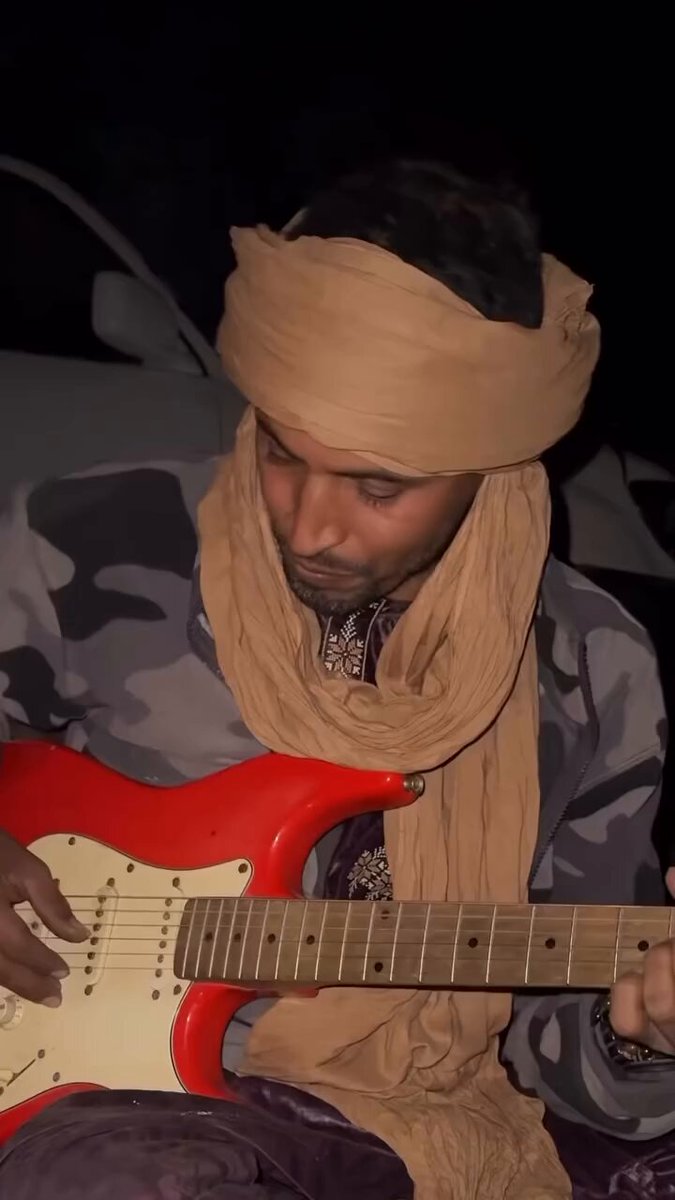[GUEST ACCESS MODE: Data is scrambled or limited to provide examples. Make requests using your API key to unlock full data. Check https://lunarcrush.ai/auth for authentication information.]  MENA Visuals [@menavisualss](/creator/twitter/menavisualss) on x 153.1K followers Created: 2025-02-24 09:56:07 UTC Amazigh Blues, often referred to as Desert Blues, is a hypnotic and deeply evocative genre of music that originates from the Imazighen people of the Sahara Desert, spanning Mali, Niger, Algeria, Libya, Burkina Faso and many other countries. Rooted in centuries-old Imazighen traditions, it merges the haunting melodies of North African Imazighen music with the raw energy of American blues and rock. The Imazighen, have long used music as a means of storytelling, resistance, and cultural preservation. Traditional Imazighen music was played on instruments like the teherdent (a type of lute) and the imzad (a one-stringed violin, traditionally played by women). However, in the late 20th century, as Imazighen communities faced displacement, political struggles, and exile, many young musicians turned to the electric guitar, inspired by the revolutionary sounds of Western blues, rock, and reggae. This fusion created a distinct style-characterized by pentatonic scales, hypnotic rhythms, call-and-response vocals, and the steady, trance-like repetition reminiscent of both Saharan folk chants and Mississippi Delta blues. The influence of artists like Ali Farka Touré, whose Malian blues style bridged African and American blues traditions, also helped shape the genre. The music features driving guitar rhythms, often with reverb-heavy electric guitars that produce a shimmering, almost psychedelic effect. Call-and-response vocals reflect lmazighen oral traditions and communal storytelling. The lyrics are poetic and political, speaking of exile, freedom, rebellion, and the vast beauty of the desert. The hypnotic, repetitive structure of the music creates a trance-like atmosphere, deeply connected to the rhythms of nomadic life and the endless expanse of the Sahara. 🎸 Houssaine Ousbouh 📷 Via Archive Africa |IG  XXXXXXX engagements  **Related Topics** [coins energy](/topic/coins-energy) [countries](/topic/countries) [burkina faso](/topic/burkina-faso) [libya](/topic/libya) [algeria](/topic/algeria) [niger](/topic/niger) [mali](/topic/mali) [sahara desert](/topic/sahara-desert) [Post Link](https://x.com/menavisualss/status/1893963108713951674)
[GUEST ACCESS MODE: Data is scrambled or limited to provide examples. Make requests using your API key to unlock full data. Check https://lunarcrush.ai/auth for authentication information.]
 MENA Visuals @menavisualss on x 153.1K followers
Created: 2025-02-24 09:56:07 UTC
MENA Visuals @menavisualss on x 153.1K followers
Created: 2025-02-24 09:56:07 UTC
Amazigh Blues, often referred to as Desert Blues, is a hypnotic and deeply evocative genre of music that originates from the Imazighen people of the Sahara Desert, spanning Mali, Niger, Algeria, Libya, Burkina Faso and many other countries.
Rooted in centuries-old Imazighen traditions, it merges the haunting melodies of North African Imazighen music with the raw energy of American blues and rock.
The Imazighen, have long used music as a means of storytelling, resistance, and cultural preservation. Traditional Imazighen music was played on instruments like the teherdent (a type of lute) and the imzad (a one-stringed violin, traditionally played by women). However, in the late 20th century, as Imazighen communities faced displacement, political struggles, and exile, many young musicians turned to the electric guitar, inspired by the revolutionary sounds of Western blues, rock, and reggae.
This fusion created a distinct style-characterized by pentatonic scales, hypnotic rhythms, call-and-response vocals, and the steady, trance-like repetition reminiscent of both Saharan folk chants and Mississippi Delta blues. The influence of artists like Ali Farka Touré, whose Malian blues style bridged African and American blues traditions, also helped shape the genre.
The music features driving guitar rhythms, often with reverb-heavy electric guitars that produce a shimmering, almost psychedelic effect. Call-and-response vocals reflect lmazighen oral traditions and communal storytelling. The lyrics are poetic and political, speaking of exile, freedom, rebellion, and the vast beauty of the desert. The hypnotic, repetitive structure of the music creates a trance-like atmosphere, deeply connected to the rhythms of nomadic life and the endless expanse of the Sahara.
🎸 Houssaine Ousbouh 📷 Via Archive Africa |IG

XXXXXXX engagements
Related Topics coins energy countries burkina faso libya algeria niger mali sahara desert